1 Module 1: Discovering the Social
Learning Objectives
- Explain why storytelling is important to both, society and sociology.
- Identify the social origins and social functions of language.
- Describe the importance of language, communication, and social interaction for discovering the social.
- Describe and compare different perspectives on the origins and possibility of the social.
- Compare ways of understanding the evolution of human societies.
- Describe the difference between pre-industrial, industrial, post-industrial and post-natural societies.
1.0 The Tales we Tell…
Then…
In 1900 a young anthropologist, John Swanton, transcribed a series of myths and tales — known as qqaygaang in the Haida language — told by the master Haida storyteller Ghandl. The tales tell stories of animal and human transformations, of heroes who marry birds, of birds who take off their skins and become women, of mussels who manifest the spirit form of whales, and of poles climbed to the sky.
After she’d offered him something to eat, Mouse Woman said to him, “When I was bringing a bit of cranberry back from my berry patch, you helped me. I intend to lend you something I wore for stalking prey when I was younger.”
She brought out a box. She pulled out four more boxes within boxes. In the innermost box was the skin of a mouse with small bent claws. She said to him, “Put this on.”
Small though it was, he got into it. It was easy. He went up the wall and onto the roof of the house. And Mouse Woman said to him, “You know what to do when you wear it. Be on your way” (Ghandl, quoted in Bringhurst, 2011).
To the ear of contemporary Canadians, these types of tales often seem confusing. They lack the standard inner psychological characterization of protagonists and antagonists, the “realism” of natural settings and chronological time sequences, or the plot devices of man against man, man against himself, and man against nature. However, as Robert Bringhurst (2011) argues, this is not because the tales are not great literature or have not completely “evolved.” In his estimation, Ghandl should be recognized as one of the most brilliant storytellers who has ever lived in Canada. Rather, it is because the stories speak to, and from, a fundamentally different experience of the world: the experience of nomadic hunting and gathering people as compared to the sedentary people of modern capitalist societies. How does the way we tell stories reflect the organization and social structures of the societies we live in?
Ghandl’s tales are told within an oral tradition rather than a written or literary tradition. They are meant to be listened to, not read, and as such the storytelling skill involves weaving in subtle repetitions and numerical patterns, and plays on Haida words and well-known mythological images rather than creating page-turning dramas of psychological or conflictual suspense. Bringhurst suggests that even compared to the Indo-European oral tradition going back to Homer or the Vedas, the Haida tales do not rely on the auditory conventions of verse. Whereas verse relies on acoustic devices like alliteration and rhyming, Haida mythic storytelling was a form of noetic prosody, relying on patterns of ideas and images. The Haida, as a preagricultural people, did not see a reason to add overt musical qualities to their use of language. “[V]erse in the strictly acoustic sense of the word does not play the same role in preagricultural societies. Humans, as a rule, do not begin to farm their language until they have begun to till the earth and to manipulate the growth of plants and animals.” As Bringhurst puts it, “myth is that form of language in which poetry and music have not as yet diverged“(Bringhurst, 2011, italics in original).
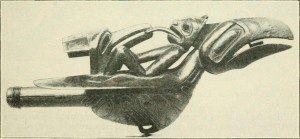
Perhaps more significantly for sociologists, the hunting and gathering lifestyle of the Haida also produces a very different relationship to the natural world and to the non-human creatures and plants with which they coexisted. This is manifest in the tales of animal-human-spirit transformations and in their moral lessons, which caution against treating the world with disrespect. With regard to understanding Haida storytelling, Bringhurst argues that:
following the poetry they [hunting gathering peoples] make is more like moving through a forest or a canyon, or waiting in a blind, than moving through an orchard or field. The language is often highly ordered, rich, compact — but it is not arranged in neat, symmetrical rows (2011).
In other words, for the hunter who follows animal traces through the woods, or waits patiently for hours in a hunting blind or fishing spot for wild prey to appear, the relationship to the prey is much more akin to “putting on their skins” or spiritually “becoming-animal” than to be a shepherd raising livestock. A successful hunting and gathering people would be inclined to study how animals think from the inside, rather than controlling or manipulating them from the outside. For the Haida, tales of animal transformations would not seem so fantastic or incomprehensible as they do to modern people who spend most of their life indoors. They would be part of their “acutely personal relations with the wild” (Bringhurst, 2011).
Similarly, the Haida ethics, embodied in their tales and myths, acknowledge a complex web of unwritten contracts between humans, animal species, and spirit-beings.
The culture as Ghandl describes it depends — like every hunting culture — not on control of the land as such but on control of the human demands that are placed upon it (Bringhurst, 2011).
In the tales, humans continually confront a world of living beings and forces that are much more powerful and intelligent than they are, and who are quick to take offense at human stupidity and hubris.
What sociologists learn from the detailed studies of the Haida and their literature is how a fundamentally different social relationship to the environment affects the way people think and how they see their place in the world. Nevertheless, although the traditional Haida society of Haida Gwaii in the Pacific Northwest is very different from that of contemporary post-industrial Canada, both can be seen as different ways of expressing the human need to cooperate and live together in order to survive. For the sociologist, this is a lesson in how the type of society one lives in — its scale and social structure — impacts one’s experience of the world at a very fundamental perceptual level.
And Now…..
Originally published in 1985, and more recently popularized as a television series, Margaret Atwood’s Handmaid’s Tale is classified as speculative fiction; a genre of literature that encourages readers to ask “what if” questions informed by their experiences of the organization and structure of society. The posing of “what if” questions in speculative fiction creates an opportunity for storytellers and their audiences to consciously reflect on the organization and social structure of lived experience as a means to imagine how relationships and experiences might be the same, or different in the future. The method of speculative fiction is not unlike the method of science. Like authors of speculative fiction, scientists systematically observe, measure and interpret their natural and social realities. In turn, they use their powers of imagination to generate “what if” questions about the factual conditions and forces that have coalesced to produce the observed conditions. As stipulated in Albert Einstein’s (1931′ On Cosmic Religion: With Other Opinions and Aphorisms, p. 49) now famous quote: “Imagination is more important than knowledge. For knowledge is limited, whereas imagination embraces the entire world, stimulating progress, giving birth to evolution. It is, strictly speaking a real factor in scientific research.”
1.1 The Social: Real but not Natural
1.1.1 Language and Communication
The premise we will be exploring in this chapter is that the human world, unlike the natural world, cannot be understood unless its meaningfulness is taken into account. Human experience is essentially meaningful, and culture is the source of the meanings that humans share. What are the consequences of this emphasis on the meaningfulness of human experience? What elements of social life become visible if we focus on the social processes whereby meanings are produced and circulated?
Culture is the term used to describe this dimension of meaningful collective existence. Culture refers to the shared symbols that people create to solve real-life problems. What this perspective entails is that human experience is essentially meaningful or cultural. Human social life is necessarily conducted through the meanings humans attribute to things, actions, others, and themselves. In a sense, people do not live in direct, immediate contact with the world and each other; instead, they live only indirectly through the medium of the shared meanings provided by culture. This mediated experience is the experience of culture. As the philosopher Martin Heidegger put it, humans live in an “openness” granted by language and by their ability to respond to the meaningfulness of things in a way that other living beings do not. The sociology of culture is, therefore, concerned with the study of how things and actions assume meanings, how these meanings orient human behaviour, and how social life is organized around and through meaning.
What is the “meaning of meaning” in social life, therefore? Max Weber notes that it is possible to imagine situations in which human experience appears direct and unmediated; for example, someone taps your knee and your leg jerks forward, or you are riding your bike and get hit by a car (1968, pp. 94–96). In these situations, experience seems purely physical, unmediated. Yet when we assimilate these experiences into our lives, we do so by making them meaningful events. By tapping your knee, the doctor is looking for signs that indicate the functioning of your nervous system. She or he is literally reading the reactions as symbolic events and assigning them meaning within the context of an elaborate cultural map of meaning: the modern biomedical understanding of the body. It is quite possible that if you were flying through the air after being hit by a car, you would not be thinking or attributing meaning to the event. You would be simply a physical projectile. But afterwards, when you reconstruct the story for your friends, the police, or the insurance company, the event would become part of your life through this narration of what happened.
Equally important to note here is that the meaning of these events changes depending on the cultural context. A doctor of traditional Chinese medicine would read the knee reflex differently than a graduate of the UBC medical program. The story and meaning of the car accident changes if it is told to a friend as opposed to a policeman or an insurance adjuster.
The problem of meaning in sociological analysis, then, is to determine how events or things acquire meaning (e.g., through the reading of symptoms or the telling of stories); how the true or right meanings are determined (e.g., through biomedically-based diagnoses or juridical procedures of determining responsibility); how meaning works in the organization of social life (e.g., through the medicalized relation to our bodies or the norms of traffic circulation); and how humans gain the capacity to interpret and share meanings in the first place (e.g., through the process of socialization into medical, legal, insurance, and traffic systems). Sociological research into culture studies all of these problems of meaning. Consequently, to discover the social in our everyday lived realities we begin by consciously reflecting on our capacity for language and communication.
Storytelling, is considered to be one of the oldest forms of human communication. Shared via different media (e.g., oral traditions, iconography, print, electronic, etc.) our stories allow us to imagine, transmit, reproduce, and transform, our normative and factual bodies of knowledge. Because storytelling, both fictional and non-fictional, is a central feature of social interaction and society, sociologists are attentive to linkages among language acquisition, systems of communication, and stories of human survival, social progress and social justice. In fact, it is within the symbolic codes that human beings create, learn and use to conduct their everyday activities that sociologists discover the origins of the social.
1.1.2 Social Interaction and the Social Construction of Reality
One of the basic questions raised in sociology is: How is society possible? What holds society together? What gives society form and continuity? This was the classical sociologist Georg Simmel’s basic question. In his essay, “The Problem of Sociology,” Simmel (1908/1971) begins by saying: “Society exists where a number of individuals enter into interaction.” This would appear to be a truism. After all, what else could society be? However, a few pages later, he reaches the conclusion that:
With each formation of parties, with each joining for common tasks or in a common feeling or way of thinking, with each articulation of the distribution of positions of submission and domination, with each common meal, with each self-adornment for others — with every growth of new synthesizing phenomena such as these, the same group becomes “more society” than it was before. There is no such thing as society “as such”; that is, there is no society in the sense that it is the condition for the emergence of all these particular phenomena. For there is no such thing as interaction “as such” — there are only specific kinds of interaction. And it is with their emergence that society too emerges, for they are neither the cause nor the consequence of society but are, themselves, society. The fact that an extraordinary multitude and variety of interactions operate at any one moment has given a seemingly autonomous historical reality to the general concept of society (Simmel, 1908/1971, emphasis is the editor’s).
If society is nothing but these simultaneous interactions, Simmel’s problem of sociology is clear. Sociology, as the “science of society,” appears to be a discipline without an object! Society is not an object or a thing; it is a mirage, a name we have given to the multitude of ongoing, unfinished processes of interaction between individuals. This means we have to ask the questions of sociology at a more basic level. How do these processes hold together and take shape? How are we able to recognize and talk about different social phenomena like the formation of parties, the joining together in common tasks, the creation of hierarchies, the wearing of jewellery, etc.? If society is nothing but a number of individuals who have entered into specific interactions, how do widespread norms of behaviour, structured relations of power, and predictable relationships between social variables form?
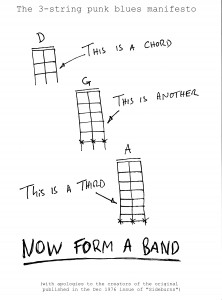
Punk rock in the 1970s saw itself returning to the roots of rock and roll. Part of this was to simplify the structure of the music to renew rock and roll as a form of music. This is a good metaphor for how Simmel understands social interaction between individuals as both a mutual attunement and an act of creation. For a coherent interaction to take place, everyone tunes their instruments together (at least somewhat) and plays the same notes and chords. However, this attunement also enables everyone to introduce new elements into the interaction and to invent new musical or social forms (or renew old ones). Along with the new musical form of punk rock came new lyrical and thematic contents: anger, disillusionment, anarchy, class politics, etc.
Simmel’s solution to the problem of how society is possible is based on the idea that the mutual influence of individuals on each other during interaction creates mutual attunements, not unlike a band tuning its instruments. This mutual influence in turn creates enduring social forms (hence the term formal sociology to describe Simmel’s work). We will discuss Simmel’s formal sociology later in Module Two. In general, however, the solution to the question — How is society possible? — differs depending on the level of analysis used to pose the question.
Canadian sociologist Dorothy Smith (b. 1926) defines the social as the “ongoing concerting and coordinating of individuals’ activities” (Smith, 1999). Sociology is the systematic study of all those aspects of life designated by the adjective “social.” They concern relationships, and they concern what happens when more than one person is involved. These aspects of social life never simply occur; they are organized processes. They can be the briefest of micro-level everyday interactions — moving to the right to let someone pass on a busy sidewalk, for example — or the largest and most enduring interactions — such as the billions of daily exchanges that constitute the circuits of global capitalism. If there are at least two people involved, even in the seclusion of one’s mind, then there is a social interaction that entails the “ongoing concerting and coordinating of activities.” Why does the person move to the right on the sidewalk? What collective processes lead to the decision that moving to the right rather than the left is normal? Think about the T-shirts in your chest of drawers at home. What are the sequences of linkages, exchanges, and social relationships that connect your T-shirts to the dangerous and hyper-exploitative garment factories in rural China or Bangladesh? These are the type of questions that point to the unique domain and puzzles of the social that sociology seeks to explore and understand.

In 1966 sociologists Peter Berger and Thomas Luckmann wrote The Social Construction of Reality. In it, they argued that society is created by humans and human interaction, which they call habitualization. Habitualization describes how “any action that is repeated frequently becomes cast into a pattern, which can then be … performed again in the future in the same manner and with the same economical effort” (Berger and Luckmann 1966). Not only do we construct our own society, but we accept it as it is because others have created it before us. Society is, in fact, “habit.”
For example, your school exists as a school and not just as a building because you and others agree that it is a school. If your school is older than you are, it was created by the agreement of others before you. In a sense, it exists by consensus, both prior and current. This is an example of the process of institutionalization, the act of implanting a convention or norm into society. Bear in mind that the institution, while socially constructed, is still quite real.
Another way of looking at this concept is through W. I. Thomas’s notable Thomas theorem which states, “If men define situations as real, they are real in their consequences” (Thomas and Thomas 1928). That is, people’s behaviour can be determined by their subjective construction of reality rather than by objective reality. For example, a teenager who is repeatedly given a label—overachiever, player, bum, delinquent—might live up to the term even though it initially was not a part of his or her character.
Howard Becker (1963) elaborates on this idea in his theory of labelling and deviance. If someone violates a particular rule it does not mean that they are deviant in other respects. But being labelled “deviant” by authorities (police, parents, teachers, etc.) initiates a chain of consequences for the individual which make it difficult for him or her to participate in conventional groups and activities (like holding a job or going to school) with the “normals.” The individual is also subject to common popular diagnoses about why he or she has “gone” that way–e.g. “he is a bad seed,” “she is weak willed,” etc.–which results in furthering the perception that he or she is an outsider. These factors in turn make it more difficult for the individual to conform to other rules which he or she had no intention of violating. The individual is placed in an increasingly untenable position in which it becomes increasingly likely they will need to resort to deceit and rule violation. “Treating a person as though he [or she] were generally rather than specifically deviant produces a self-fulfilling prophecy” (Becker, 1963).
Like Berger and Luckmann’s description of habitualization, and Becker’s description of labelling, Thomas states that our moral codes and social norms are created by “successive definitions of the situation.” This concept is defined by sociologist Robert K. Merton as a self-fulfilling prophecy. Merton explains that with a self-fulfilling prophecy, even a false idea can become true if it is acted on. Merton gives the example of a “bank run.” Say for some reason, a number of people falsely fear that their bank is soon to be bankrupt. Because of this false notion, people run to their bank and demand all their cash at once. As banks rarely, if ever, have that much money on hand, the bank does indeed run out of money, fulfilling the customers’ prophecy. On the other hand, “investor confidence” is another social construct, which as we saw in the lead up to the financial crisis of 2008, is “real in its consequences” but based on a fiction. Social Reality is constructed by an idea.

Social interaction is the process of reciprocal influence exercised by individuals over one another during social encounters. Usually it refers to face-to-face encounters in which people are physically present with one another for a specified duration. Face-to-face interaction of even the simplest sort is a far more socially intricate operation than we generally recognize. It is rife with unacknowledged rituals, tacit understandings, covert symbolic exchanges, impression management techniques, and calculated strategic maneuverings. In contemporary society, however, we can also think of social encounters that are technologically mediated like texting, skyping, or messaging. In terms of the different levels of analysis in sociology–micro, meso, macro, and global–social interaction is generally approached at the micro-level where the structures and social scripts, the pre-established patterns of behaviour that people are expected to follow in specific social situations, that govern the relationship between particular individuals can be examined. However, the sociological study of the micro-level processes of everyday life are also impacted by macro-level phenomena such as gender and class inequality as well as historical transformations.
1.2 Types of Societies and Models of Social Evolution
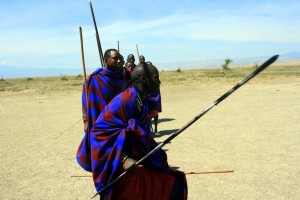
While language, communication and social interaction are key elements to understanding the possibility and continuance of society, the question of precisely what society is in a particular context remains open. Haida, Maasai, modern Canadians — each is a society. But what does this mean? Exactly what is a society? In sociological terms, a society refers to a group of people who interact in a definable territory and share the same culture. In practical, everyday terms, societies consist of various types of institutional constraint and coordination exercised over our choices and actions. The type of society we live in determines the nature of these types of constraint and coordination. The nature of our social institutions, the type of work we do, the way we think about ourselves and the structures of power and social inequality that order our life chances are all products of the type of society we live in and thus vary globally and historically.
The founder of sociology, August Comte (1798–1857), provided the first sociological theory of the evolution of human societies. His best known sociological theory was the law of three stages, which held that all human societies and all forms of human knowledge evolve through three distinct stages from primitive to advanced: the theological, the metaphysical, and the positive. The key variable in defining these stages was the way a people conceptualized causation or how they understood their place in the world.
In the theological stage, humans explain causes in terms of the will of anthropocentric gods (the gods cause things to happen). In the metaphysical stage, humans explain causes in terms of abstract, “speculative” ideas like nature, natural rights, social contracts, or “self-evident” truths. This was the basis of Comte’s critique of the Enlightenment philosophers whose ideas about natural rights and freedoms had led to the French Revolution but also to the chaos of its aftermath. In his view, the “negative” or metaphysical knowledge of the philosophers was based on dogmatic ideas that could not be reconciled when they were in contradiction. This lead to inevitable conflict and moral anarchy. Finally, in the positive stage, humans explain causes in terms of positivist, scientific observations and laws (i.e., “positive” knowledge based on propositions limited to what can be empirically observed). Comte believed that this would be the final stage of human social evolution because positivist science could empirically determine how society should be organized. Science could reconcile the division between political factions of order and progress by eliminating the basis for moral and intellectual anarchy. The application of positive philosophy would lead to the unification of society and of the sciences (Comte, 1830/1975).
Karl Marx offered another model for understanding the evolution of types of society. Marx argued that the evolution of societies from primitive to advanced was not a product of the way people thought, as Comte proposed, but of the power struggles in each epoch between different social classes over control of property. The key variable in his analysis was the different modes of production or “material bases” that characterized different forms of society: from hunting and gathering, to agriculture, to industrial production. This historical materialist approach to understanding society explains both social change and the development of human ideas in terms of underlying changes in the mode of production. In other words the type of society and its level of development is determined principally by how a people produces the material goods needed to meet its needs. Their world view, including the concepts of causality described by Comte, followed from the way of thinking involved in the society’s mode of production.
On this basis, Marx categorized the historical types of society into primitive communism, agrarian/slave societies, feudalism, and capitalism. Primitive communists, for example, are hunter gatherers like the Haida whose social institutions and worldview develop in sync with their hunting and gathering relationship to the environment and its resources. They are defined by their hunter-gatherer mode of production.
Marx went on to argue that the historical transformations from one type of society to the next are generated by the society’s capacity to generate economic surpluses and the conflicts and tensions that develop when one class monopolizes economic power or property: land owners over agricultural workers, slave owners over slaves, feudal lords over serfs, or capitalists over labourers. These class dynamics are inherently unstable and eventually lead to revolutionary transformations from one mode of production to the next.
To simplify Comte’s and Marx’s schemas, we might examine the way different types of society are structured around their relationship to nature. Sociologist Gerhard Lenski (1924-2015) defined societies in terms of their technological sophistication. With each advance in technology the relationship between humans and nature is altered. Societies with rudimentary technology are at the mercy of the fluctuations of their environment, while societies with industrial technology have more control over their environment, and thus develop different cultural and social features. On the other hand, societies with rudimentary technology make relatively little impact on their environment, while industrial societies transform it radically. The changes in the relationship between humans and their environment in fact goes beyond technology to encompass all aspects of social life, including its mental life (Comte) and material life (Marx). Distinctions based on the changing nature of this relationship enable sociologists to describe societies along a spectrum: from the foraging societies that characterized the first 90,000 years of human existence to the contemporary postnatural, anthropocene societies in which human activity has made a substantial impact on the global ecosystem.
1.2.1 Preindustrial Societies
Before the Industrial Revolution and the widespread use of machines, societies were small, rural, and dependent largely on local resources. Economic production was limited to the amount of labour a human being could provide, and there were few specialized occupations. Production was (for the most part) for immediate consumption, although evidence of trade between groups also goes back the earliest archaeological records. The very first occupation was that of hunter-gatherer.
Hunter-Gatherer Societies
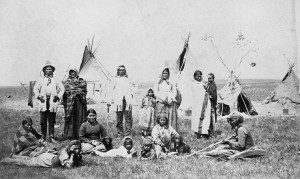
Of the various types of preindustrial societies, Hunter-gatherer societies demonstrate the strongest dependence on the environment. As the basic structure of all human society until about 10,000–12,000 years ago, these groups were based around kinship or tribal affiliations. Hunter-gatherers relied on their surroundings for survival — they hunted wild animals and foraged for uncultivated plants for food. They survived on what nature provided and immediately consumed what they obtained. They produced no surpluses. When resources became scarce, the group moved to a new area to find sustenance, meaning they were nomadic. The plains Indians of North America, moved frequently to follow their main source of food. Some groups, like the Haida, lived off of abundant, non-depleting resources like fish, which enabled them to establish permanent villages where they could dwell for long periods of the year before dispersing to summer camps.
Most of the caloric intake of hunters and gatherers came from foraging for edible plants, fruits, nuts, berries, and roots. The largely meat-based diet of the Inuit is a notable exception. Richard Lee (1978) estimated that approximately 65% of the hunter-gatherer diet came from plant sources, which had implications for the gender egalitarianism of these societies. With the earliest economic division of labour being between male hunters and women gatherers, the fact that women accounted for the largest portion of the food consumed by the community ensured the importance of their status within the group. On the other hand, early reports of missionaries among the Algonquins of the north shore of Lake Superior observed women with their noses cut off and small parts of their scalp removed as punishment for adultery, suggesting that (at least among some groups) female subordination was common. Male Algonquins often had seven or eight wives (Kenton, 1954).
As a result of their unique relationship and dependence on the environment for sustenance, the ideal type or model that characterized hunter-gatherer societies includes several common features (Diamond, 1974):
- The distribution of economic surplus is organized on a communalistic, shared basis in which there is little private property, work is cooperative, and gift giving is extensive. The use of resources was governed by the practice of usufruct, the distribution of resources according to need (Bookchin, 1982).
- Power is dispersed either shared equally within the community, or shifting between individual members based on individual skills and talents.
- Social control over the members of society is exercised through shared customs and sentiment rather than through the development of formal law or institutions of law enforcement.
- Society is organized on the basis of kinship and kinship ties so there are few, if any, social functions or activities separate from family life.
- There is little separation between the spheres of intimate private life and public life. Everything is a matter of collective concern.
- The life of the community is all “personal” and emotionally charged. There is little division of labour so there is no social isolation.
- Art, story telling, ethics, religious ritual and spirituality are all fused together in daily life and experience. They provide a common means of expressing imagination, inspiration, anxiety, need and purpose.
One interesting aspect of hunter-gatherer societies that runs counter to modern prejudices about “primitive” society, is how they developed mechanisms to prevent their evolution into more “advanced” sedentary, agricultural types of society. For example, in the “headman” structure, the authority of the headman or “titular chief” rests entirely on the ongoing support and confidence of community members rather than permanent institutional structures. This is a mechanism that actively wards off the formation of permanent institutionalized power (Clastres, 1987). The headman’s main role is as a diplomatic peacemaker and dispute settler, and he held sway only so long as he maintained the confidence of the tribe. Beyond a headman’s personal prestige, fairness in judgement and verbal ability, there was no social apparatus to enable a permanent institutional power or force to emerge.
Similarly the Northwest Pacific practice of the potlatch, in which goods, food, and other material wealth were regularly given away to neighboring bands, provided a means of redistributing wealth and preventing permanent inequality from developing. Evidence also shows that even when hunter-gatherers lived in close proximity with agriculturalists they were not motivated to adopt the agricultural mode of production because the diet of early agricultural societies was significantly poorer in nutrition (Stavrianos, 1990; Diamond, 1999). Recent evidence from archaeological sites in the British Isles suggests for example that early British hunter-gatherers traded for wheat with continental agriculturalists 2,000 years before agricultural economies were adopted in ancient Britain (Smith et. al., 2015; Larson, 2015). They had close contact with agriculturalists but were not inclined to adopt their sedentary societal forms, presumably because there was nothing appealing about them.
These societies were common until several hundred years ago, but today only a few hundred remain in existence, such as indigenous Australian tribes sometimes referred to as “aborigines,” or the Bambuti, a group of pygmy hunter-gatherers residing in the Democratic Republic of Congo. Still, in 2014, members of the Amazonian Mashco-Piro clan emerged out of their voluntary isolation at the border of Peru and Brasil to make “first contact” with the Brazilian government’s Indigenous people’s authority (Funai) in order to seek protection from suspected drug-traffickers (Carrington, 2014). Hunter-gatherer groups largely disappeared under the impact of colonization and European diseases, but it is estimated that another 75 uncontacted tribes still inhabit the Amazonian rainforest.

Horticultural and Pastoral Societies
Around 10,200 BCE, another type of society developed in ancient Anatolia, (now part of Turkey), based on the newly developed capacity for people to grow and cultivate plants. Previously, the depletion of a region’s crops or water supply forced hunter-gatherer societies to relocate in search of food sources. Horticultural societies formed in areas where rainfall and other conditions provided fertile soils to grow stable crops with simple hand tools. Their increasing degree of control over nature decreased their dependence on shifting environmental conditions for survival. They no longer had to abandon their location to follow resources and were able to find permanent settlements. The new horticultural technology created more stability and dependability, produced more material goods and provided the basis for the first revolution in human survival: the neolithic revolution.
Changing conditions and adaptations also led some societies to rely on the domestication of animals where circumstances permitted. Roughly 8,000 BCE, human societies began to recognize their ability to tame and breed animals. Pastoral societies rely on the domestication of animals as a resource for survival. Unlike earlier hunter-gatherers who depended entirely on existing resources to stay alive, pastoral groups were able to breed livestock for food, clothing, and transportation, creating a surplus of goods. Herding, or pastoral, societies remained nomadic because they were forced to follow their animals to fresh feeding grounds.
With the emergence of horticultural and pastoral societies during the neolithic revolution, stable agricultural surpluses began to be generated, population densities increased, specialized occupations developed, and societies commenced sustained trading with other local groups. Feuding and warfare also grew with the accumulation of wealth. One of the key inventions of the neolithic revolution therefore was structured, social inequality: the development of a class structure based on the appropriation of surpluses. A social class can be defined as a group that has a distinct relationship to the means of production. In neolithic societies, based on horticulture or animal husbandry as their means of production, control of land or livestock became the first form of private property that enabled one relatively small group to take the surpluses while another much larger group produced them. For the first time in history, societies were divided between producing classes and owning classes. Moreover, as control of land was the source of power in neolithic societies, ways of organizing and defending it became a more central preoccupation. The development of permanent administrative and military structures, taxation, as well as the formation of specialized priestly classes to spiritually unite society originated on the basis of the horticultural and pastoral relationship to nature.
Agricultural Societies
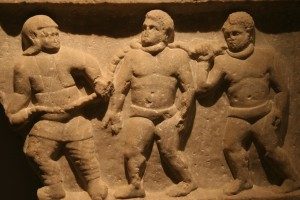
While pastoral and horticultural societies used small, temporary tools such as digging sticks or hoes, agricultural societies relied on permanent tools for survival. Around 3,000 BCE, an explosion of new technology known as the Agricultural Revolution made farming possible — and profitable. Farmers learned to rotate the types of crops grown on their fields and to reuse waste products such as fertilizer, which led to better harvests and bigger surpluses of food. New tools for digging and harvesting were made of metal, making them more effective and longer lasting. Human settlements grew into towns and cities, and particularly bountiful regions became centres of trade and commerce.
This era in which some classes of people had the time and comfort to engage in more contemplative and thoughtful activities, such as music, poetry, and philosophy, became referred to as the “dawn of civilization” by some because of the development of leisure and arts. Craftspeople were able to support themselves through the production of creative, decorative, or thought-provoking aesthetic objects and writings.
As agricultural techniques made the production of surpluses possible, social classes and power structures became further entrenched. Kinship ties became secondary to other forms of social allegiance and power. Those with the power to appropriate the surpluses were able to dominate the society on a wider scale than ever before. Classes of nobility and religious elites developed. As cities expanded, ownership and protection of resources became an ever pressing concern and the militarization of society became more prominent. Difference in social standing between men and women, already initiated in neolithic societies, became more pronounced and institutionalized. Slavery — the ownership and control of humans as property — was also institutionalized as a large scale source of labour. In the agricultural empires of Greece and Rome, slavery was the dominant form of class exploitation. However, as slaves were largely acquired through military acquisition, ancient slavery as an institution was inherently unstable and inefficient.
Feudal Societies
In Europe, the 9th century gave rise to feudal societies. Feudal societies were still agriculturally based but organized according to a strict hierarchical system of power founded on land ownership, military protection, and duties or mutual obligations between the different classes. Feudalism is usually used in a restricted sense by historians to describe the societies of post-Roman Europe, from roughly the 9th to the 15th centuries (the “middle ages”), although these societies bare striking resemblance to the hierarchical, agricultural-based societies of Japan, China, and pre-contact America (e.g., Aztec, Inca) of the same period.
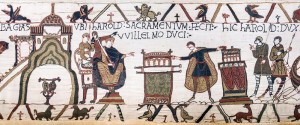
In Europe the class system of feudalism was organized around the parceling out of manors or estates by the aristocracy to vassals and knights in return for their military service. The nobility, known as lords, rewarded knights or vassals by granting them pieces of land. In return for the resources that the land provided, vassals promised to fight for their lords. These individual pieces of land, known as fiefdoms, were cultivated by the lower class of serfs. Serfs were not slaves, in that they were at least nominally free men and women, but they produced agricultural surpluses for lords primarily through forced agricultural service. In return for maintaining and working the land, serfs were guaranteed a place to live and military protection from outside enemies. They were able to produce food and goods for their own consumption on private land allotments, or on common allotments shared by the community. Power in feudal society was handed down through family lines, with serf families serving lords for generations and generations.
In later forms of feudalism, the forced labour of the serfs was gradually replaced by a system of rents and taxation. Serfs worked their own plots of land but gave their lords a portion of what they produced. Gradually payment in the form of goods and agricultural surplus was replaced by payment in the form of money. This prompted the development of markets in which the exchange of goods through bartering was replaced by the exchange of goods for money. This was the origin of the money economy. In bartering, the buyer and the seller have to need each other’s goods. In a market economy, goods are exchanged into a common medium of value — money — which can then be exchanged for goods of any nature. Markets therefore enabled goods and services to be bought and sold on a much larger scale and in a much more systematic and efficient way. Money also enabled land to be bought and sold instead of handed down through hereditary right. Money could be accumulated and financial debts could be incurred.
Ultimately, the social and economic system of feudalism was surpassed by the rise of capitalism and the technological advances of the industrial era, because money allowed economic transactions to be conceived and conducted in an entirely new way. In particular, the demise of feudalism was initiated by the increasing need to intensify labour and improve productivity as markets became more competitive and the economy less dependent on agriculture.
1.2.2 Industrial Societies

In the 18th century, Europe experienced a dramatic rise in technological invention, ushering in an era known as the Industrial Revolution. What made this period remarkable was the number of new inventions that influenced people’s daily lives. Within a generation, tasks that had until this point required months of labour became achievable in a matter of days. Before the Industrial Revolution, work was largely person- or animal-based, relying on human workers or horses to power mills and drive pumps. In 1782, James Watt and Matthew Boulton created a steam engine that could do the work of 12 horses by itself.
Steam power began appearing everywhere. Instead of paying artisans to painstakingly spin wool and weave it into cloth, people turned to textile mills that produced fabric quickly at a better price, and often with better quality. Rather than planting and harvesting fields by hand, farmers were able to purchase mechanical seeders and threshing machines that caused agricultural productivity to soar. Products such as paper and glass became available to the average person, and the quality and accessibility of education and health care soared. Gas lights allowed increased visibility in the dark, and towns and cities developed a nightlife.
One of the results of increased wealth, productivity, and technology was the rise of urban centres. Serfs and peasants, expelled from their ancestral lands, flocked to the cities in search of factory jobs, and the populations of cities became increasingly diverse. The new generation became less preoccupied with maintaining family land and traditions, and more focused on survival. Some were successful in acquiring wealth and achieving upward mobility for themselves and their family. Others lived in devastating poverty and squalor. Whereas the class system of feudalism had been rigid, and resources for all but the highest nobility and clergy were scarce, under capitalism social mobility (both upward and downward) became possible.
It was during the 18th and 19th centuries of the Industrial Revolution that sociology was born (the history of sociology is elaborated more fully in Module Two). Life was changing quickly and the long-established traditions of the agricultural eras did not apply to life in the larger cities. Masses of people were moving to new environments and often found themselves faced with horrendous conditions of filth, overcrowding, and poverty. Social science emerged in response to the unprecedented scale of the social problems of modern society.
It was during this time that power moved from the hands of the aristocracy and “old money” to the new class of rising bourgeoisie who were able to amass fortunes in their lifetimes. In Canada, a new cadre of financiers and industrialists like Donald Smith (1st Baron Strathcona and Mount Royal) and George Stephen (1st Baron Mount Stephen) became the new power players, using their influence in business to control aspects of government as well. Eventually, concerns over the exploitation of workers led to the formation of labour unions and laws that set mandatory conditions for employees. Although the introduction of new “postindustrial” technologies (like computers) at the end of the 20th century ended the industrial age, much of our social structure and social ideas — such as the nuclear family, left-right political divisions, and time standardization — have a basis in industrial society.
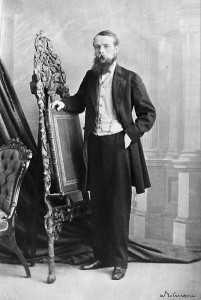
1.2.3 Postindustrial Societies

Information societies, sometimes known as postindustrial or digital societies, are a recent development. Unlike industrial societies that are rooted in the production of material goods, information societies are based on the production of information and services.
Digital technology is the steam engine of information societies, and high tech companies such as Apple, Microsoft and RIM are its version of railroad and steel manufacturing corporations. Since the economy of information societies is driven by knowledge and not material goods, power lies with those in charge of creating, storing, and distributing information. Members of a postindustrial society are likely to be employed as sellers of services — software programmers or business consultants, for example — instead of producers of goods. Social classes are divided by access to education, since without technical and communication skills, people in an information society lack the means for success.
Postnatural Society: The Anthropocene

Recent scientific and technological developments transform the relationship to nature to a such a degree that it is possible to talk about a new postnatural society. Advances in computing, genetics, nano-technology and quantum mechanics create the conditions for society in which the limits imposed by nature are overcome by technological interventions at the molecular level of life and matter. Donna Haraway (1991) describes the new “cyborg” reality that becomes possible when the capacities of the body and mind are enhanced by various prosthetic devices like artificial organs or body parts. When these artificial prosthetics do not simply replace defective anatomy but improve upon it, one can argue that the conditions of life have become postnatural. In his science fiction novel Holy Fire (1996), Bruce Sterling extrapolates from recent developments in medical knowledge to imagine a future epoch of posthumanity, i.e., a period in which the mortality that defined the human condition for millennia has effectively been eliminated through the technologies of life preservation.
Through genetic engineering, scientists have been able to create new life forms since the early 1970s. This research is fueled by the prospect of using genetic technologies to solve problems, like disease and aging, at the level of the DNA molecule that contains the “blueprint” of life. Food crops can be designed that are pest-resistant, drought-resistant or more productive. These technologies are therefore theoretically capable of solving environmentally imposed restrictions on our collective ability to feed the hungry. Similarly, nanotechnologies, which allow the physical properties of materials to be engineered at the atomic and subatomic level, pose the possibility of an infinitely manipulable universe. The futurologist Ray Kurzweil (2009) suggests that on the basis of nanotechnology “we’ll be able to create just about anything we need in the physical world from information files with very inexpensive input materials.” Others caution that the complexity of risks posed by the introduction of these molecular technologies into the environment makes their use decidedly dangerous and their consequences incalculable. This is a very postnatural dilemma; one that would not have occurred to people in earlier types of society.
What are the effects of postnatural technologies on the structure and forms of social life and society? At present, these technologies are extremely capital-intensive to develop, which suggests that they will have implications for social inequality — both within societies and globally. Wealthy nations and wealthy individuals will be the most likely beneficiaries. Moreover, as the development of postnatural technologies do not impact the basic structures of capitalism, for the forseeable future decisions on which avenues of research are to be pursued will be decided solely on the basis of profitable returns. Many competing questions concerning the global risks of the technologies and the ethics of their implementation are secondary to the profit motives of the corporations that own the knowledge.
In terms of the emergent life technologies like genetic engineering or micro-biochemical research, Nikolas Rose (2007) suggests that we are already experiencing five distinct lines of social transformation:
- The “molecularization” of our perspective on the human body, or life in general, implies that we now visualize the body and intervene in its processes at the molecular level. We are “no longer constrained by the normativity of a given order.” From growing skin in a petri dish to the repurposing of viruses, the body can be reconstructed in new, as yet unknown forms because of the pliability of life at the molecular level.
- The technologies shift our attention to the optimization of the body’s capacities rather than simply curing illness. It becomes possible to address our risk and susceptibility to future illnesses or aging processes, just as it becomes feasible to enhance the body’s existing capacities (e.g., strength, cognitive ability, beauty, etc.).
- The relationship between bodies and political life changes to create new forms of biological citizenship. We increasingly construct our identities according to the specific genetic markers that define us, (e.g., “we are the people with Leber’s Amaurosis”), and on this basis advocate for policy changes, accommodations, resources, and research funding, etc.
- The complexity of the knowledge in this field increasingly forces us to submit ourselves to the authority of the new somatic specialists and authorities, from neurologists to genetics counselors.
- As the flows of capital investment in biotechnology and biomedicine shift towards the creation of a new “bioeconomy,” the fundamental processes of life are turned into potential sources of profit and “biovalue.”
Some have described the postnatural period that we are currently living in as the Anthropocene. The anthropocene is defined as the geological epoch following the Pleistocene and Holocene in which human activities have significantly impacted the global ecosystem (Crutzen and Stoermer, 2000). Climate change is the primary example of anthropocenic effect, but it includes a number of other well-known examples from soil erosion and species extinction to the acidification of the oceans. Of course this impact began at least as early as the 19th century with the effects on the environment caused by the industrial revolution. Arguably, however, it is the recently established knowledge and scientific evidence of these effects which constitutes the current era as the anthropocene. In the anthropocene we become aware of the global nature of the catastrophic risks that human activities pose to the environment. It is also this knowledge that enables the possibility of institutional, economic, and political change to address these issues. Current developments like the use of cap and trade or carbon pricing to factor in the cost the environmental impact into economic calculations, the shift to “green” technologies like solar and wind power, or even curbside recycling have both global implications and direct repercussions for the organization of daily life.
1.3 Summary
Humans are social creatures. Since the dawn of Homo sapiens, nearly 200,000 years ago, people have grouped together into communities in order to survive. Living together, people developed forms of cooperation which created the common habits, behaviours, and ways of life known as culture — from specific methods of childrearing to preferred techniques for obtaining food. Peter Berger (b. 1929) argued that this is the result of a fundamental human predicament (1967). Unlike other animals, humans lack the biological programming to live on their own. They require an extended period of dependency in order to survive in the environment. The creation of culture makes this possible by providing a protective shield against the harsh impositions of nature. Culture provides the ongoing stability that enables human existence. This means, however, that the human environment is not nature per se but culture itself.
Over the history of humanity, this has lead to an incredible diversity in how humans have imagined and lived life on Earth, the sum total of which Wade Davis (b. 1953) has called the ethnosphere. The ethnosphere is the entirety of all cultures’ “ways of thinking, ways of being, and ways of orienting oneself on the Earth” (Davis, 2007). It is our collective cultural heritage as a species. A single culture, as the sphere of meanings shared by a single social group, is the means by which that group makes sense of the world and of each other. But there are many cultures and many ways of making sense of the world. Through a multiplicity of cultural inventions, human societies have adapted to the environmental and biological conditions of human existence in many different ways. What do we learn from this?
The central argument put forward in this chapter is that human social life is essentially meaningful and, therefore, has to be understood first through an analysis of the cultural practices and institutions that produce meaning. Nevertheless, a fascination in contemporary culture persists for finding biological or genetic explanations for complex human behaviours that would seem to contradict the emphasis on culture. In Module Two we take up this fascination with the biological over the cultural and explore the history of sociology in light of its intellectual and social foundations as well as classical exemplars.
Key Terms
Myths: a folklore genre, comprised of stories or narratives usually of unknown origin that serve to reveal a dimension of the world view of a group, or to explain a practice or belief.
Language: any comprehensive system of words or symbols representing concepts. It does not necessarily have to be spoken, as the hundreds of different sign languages in use around the world suggest.
Communication: The act of transmitting meaning from one source to another using signs, symbols and rules.
Habitualization: describes how “any action that is repeated frequently becomes cast into a pattern, which can then be … performed again in the future in the same manner and with the same economical effort” (Berger and Luckmann 1966).
Institutionalization: the act of implanting a convention or norm into society. Bear in mind that the institution, while socially constructed, is still quite real.
Thomas Theorem: states, “If men define situations as real, they are real in their consequences” (Thomas and Thomas 1928). That is, people’s behaviour can be determined by their subjective construction of reality rather than by objective reality.
Self-fullfilling Prophecy: Robert K. Merton that even a false idea can become true if it is acted on.
Social Interaction: the process of reciprocal influence exercised by individuals over one another during social encounters.
Social Scripts: the pre-established patterns of behaviour that people are expected to follow in specific social situations, that govern the relationship between particular individuals can be examined.
Theological Stage: humans explain causes in terms of the will of anthropocentric gods (the gods cause things to happen).
Metaphysical Stage: humans explain causes in terms of abstract, “speculative” ideas like nature, natural rights, social contracts, or “self-evident” truths.
Positive Stage: humans explain causes in terms of positivist, scientific observations and laws (i.e., “positive” knowledge based on propositions limited to what can be empirically observed).
Ethnosphere: the entirety of all cultures’ “ways of thinking, ways of being, and ways of orienting oneself on the Earth” (Davis, 2007).
1.4 References
Becker, Howard. (1963). Outsiders : Studies in the sociology of deviance. New York: Macmillan.
Bookchin, Murray. (1982). The ecology of freedom: The emergence and dissolution of hierarchy. (Palo Alto, CA.: Cheshire Books).
Bringhurst, R. (2011). A story as sharp as a knife: The classical Haida mythtellers and their world (Vol. 1). Douglas & McIntyre.
Berger, P. L. & Luckmann, T. (1966). The social construction of reality: A treatise in the sociology of knowledge. Garden City, NY: Anchor Books.
Berger, P. (1967). The sacred canopy: Elements of a theory of religion. New York, NY: Doubleday.
Carrington, Damian. (2014, August 1). Amazon tribe makes first contact with outside world. The Guardian. Retrieved September 24, 2015 from http://www.theguardian.com/world/2014/aug/01/amazon-tribe-makes-first-contact-with-outside-world.
Clastres, Pierre. (1987). Society against the state: Essays in political anthropology. NY: Zone Books
Comte, August. (1975). The nature and importance of the positive philosophy. In Gertrud Lenzer (Ed.), Auguste Comte and positivism: the essential writings. NY: Harper and Row. (original work published 1830)
Crutzen, Paul and Eugene Stoermer, (2000, May). The Anthropocene. [PDF] Global change newsletter. No. 41: 17-18. Retrieved Oct. 4, 2015 from http://www.igbp.net/download/18.316f18321323470177580001401/NL41.pdf.
Davis, W., Harrison, K. D., & Howell, C. H. (Eds.). (2007). Book of peoples of the world: a guide to cultures. National Geographic Books.
Diamond, Jared. (1999, May 1). The worst mistake in the history of the human race. Discover. Retrieved Oct. 1, 2015 from http://discovermagazine.com/1987/may/02-the-worst-mistake-in-the-history-of-the-human-race. (originally published in the May 1987 Issue)
Diamond, Stanley. (1974). In search of the primitive. Chicago: Transaction Books
Haraway, Donna. (1991). A cyborg manifesto: Science, technology and socialist-feminism in the late 20th century. Simians, cyborgs and women: The reinvention of nature (Ch. 8). London: Free Association
Kenton, Edna. (1954). The Jesuit relations and allied documents. NY: Vanguard Press.
Kurzweil, Ray. (2009). Ray Kurzweil on the future of nanotechnology. Big think. Retrieved, Oct. 4, 2015, from http://bigthink.com/videos/ray-kurzweil-on-the-future-of-nanotechnology
Larson, Gregor. (2015). How wheat came to Britain. Science, Vol. 347 (6225): 945-946.
Lee, Richard. (1978). Politics, sexual and nonsexual, in an egalitarian society. Social science information, 17.
Marx, Karl. (1977). Preface to a critique of political economy. In D. McLellan (Ed.), Karl Marx: Selected Writings (pp. 388–392). London, UK: Oxford University Press. (original work published 1859)
Merton, R. K. (1957). The role-set: Problems in sociological theory. British Journal of Sociology 8(2), 106–120.
Rose, N. (2007). The politics of life itself: Biomedicine, power, and subjectivity in the twenty-first century. Princeton, NJ: Princeton University Press.
Simmel, Georg. (1971). The problem of sociology. In D. Levine (Ed.), Georg Simmel: On individuality and social forms (pp. 23–27). Chicago: University of Chicago Press. (original work published 1908)
Smith, Dorothy. (1999). Writing the social: Critique, theory, and investigations. Toronto: University of Toronto Press.
Smith, Oliver, Garry Momber, Richard Bates, Paul Garwood, Simon Fitch, Mark Pallen, Vincent Gaffney, Robin G. Allaby. (2015). Sedimentary DNA from a submerged site reveals wheat in the British Isles 8000 years ago. Science, Vol. 347 (6225): 998-1001
Stavrianos, Leften. (1990). Lifelines from our past: A new world history. NY: LB Taurus
Sterling, Bruce. (1996). Holy fire. New York: Bantam Spectra.
Thomas William, I., & Thomas, D. S. (1928). The child in America: Behavior problems and programs. New York: AA Knopf.
Weber, M. (1968). On charisma and institution building. University of Chicago Press.

